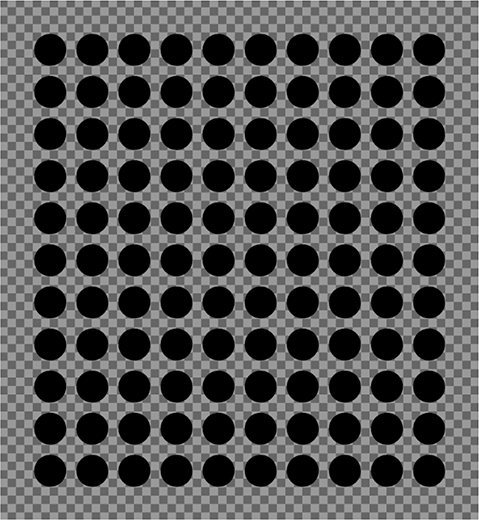Anderson, B. L., & Burr, D. C. (2018). Visual perception: To curve or not to curve. Current Biology, 28(4), R150–R152. doi: 10.1016/j.cub.2018.01.037 |
Bell, J., Gheorghiu, E., Hess, R. F., & Kingdom, F. A. (2011). Global shape processing involves a hierarchy of integration stages. Vision Research, 51(15), 1760–1766. doi: 10.1016/j.visres.2011.06.003 |
Bertamini, M., & Kitaoka, A. (2018). Blindness to curvature and blindness to illusory curvature. i-Perception, 9(3), 2041669518776986. doi: 10.1177/2041669518776986 |
Carlson, C. R., Moeller, J. R., & Anderson, C. H. (1984). Visual illusions without low spatial frequencies. Vision Research, 24, 1407–1413. doi: 10.1016/0042-6989(84)90196-2 |
Carrasco, M., Figueroa, J. G., & Willen, J. D. (1986). A test of the spatial-frequency explanation of the Müller-Lyer illusion. Perception, 15(5), 553–562. doi: 10.1068/p150553 |
Coren, S., Ward, L. M., Porac, C., & Fraser, R. (1978). The effect of optical blur on visual-geometric illusions. Bulletin of the Psychonomic Society, 11(6), 390–392. doi: 10.3758/BF03336863 |
Day, M., & Loffler, G. (2009). The role of orientation and position in shape perception. Journal of Vision, 9(10), 14. doi: 10.1167/9.10.14 |
Dumoulin, S. O., & Hess, R. F. (2007). Cortical specialization for concentric shape processing. Vision Research, 47(12), 1608–1613. doi: 10.1016/j.visres.2007.01.031 |
Fraser, J. (1908). A new visual illusion of direction. British Journal of Psychology, 2, 307–320. doi: 10.1111/j.2044-8295.1908.tb00182.x |
Gheorghiu, E., & Kingdom, F. A. (2006). Luminance-contrast properties of contour-shape processing revealed through the shape-frequency after-effect. Vision Research, 46(21), 3603–3615. doi: 10.1016/j.visres.2006.04.021 |
Ginsburg, A. P. (1986). Spatial filtering and visual form perception. In K. R. Boff, L. Kaufman, & J. P. Thomas (Eds.), Handbook of perception and human performance, Vol. 2. Cognitive processes and performance (pp. 1–41). John Wiley & Sons. |
Ginsburg, A. P., & Evans, D. W. (1979). Predicting visual illusions from filtered images based upon biological data. Journal of the Optical Society of America, 69, 1443. |
Gregory, R. L., & Heard, P. (1979). Border locking and the Café Wall illusion. Perception, 8, 365–380. doi: 10.1068/p080365 |
Ishikawa, M. (2018). The bumpy circle illusion, Abstract for the 3rd prize in the 10th visual illusion and auditory illusion contest in Japan, Retrieved from http://www.psy.ritsumei.ac.jp/~akitaoka/sakkon/Ishikawa2018-explanatoin.pdf (in Japanese) |
Ito, H. (2012). Cortical shape adaptation transforms a circle into a hexagon: A novel afterimage illusion. Psychological Science, 23(2), 126–132. doi: 10.1177/0956797611422236 |
Ito, M., & Komatsu, H. (2004). Representation of angles embedded within contour stimuli in area V2 of macaque monkeys. Journal of Neuroscience, 24(13), 3313–3324. doi: 10.1523/JNEUROSCI.4364-03.2004 |
Kanizsa G., & Gerbino W. (1976). Convexity and symmetry in figure-ground organization. In (ed.), M. Henle Vision and Artifact (pp. 25–32). New York: Springer. |
Kawabe, T., Qian, K., Yamada, Y., & Miura, K. (2010). The jaggy diamonds illusion. Perception, 39(4), 573–576. doi: 10.1068/p6617 |
Kramer, D., & Fahle, M. (1996). A simple mechanism for detecting low curvatures. Vision Research, 36(10), 1411–1419. doi: 10.1016/0042-6989(95)00340-1 |
Kitaoka, A. (1998). Apparent contraction of edge angles. Perception, 27, 1209–1219. doi: 10.1068/p271209 |
Levi, D. M., & Klein, S. A. (2000). Seeing circles: What limits shape perception? Vision Research, 40(17), 2329–2339. doi: 10.1016/S0042-6989(00)00092-4 |
Loffler, G. (2008). Perception of contours and shapes: Low and intermediate stage mechanisms. Vision Research, 48(20), 2106–2127. doi: 10.1016/S0042-6989(00)00092-4 |
McCourt, M. E. (1982). A spatial frequency dependent grating-induction effect. Vision Research, 22(1), 119–134. doi: 10.1016/0042-6989(82)90173-0 |
Morgan, M. J., & Moulden, B. (1986). The Münsterberg figure and twisted cords. Vision Research, 26(11), 1793–1800. doi: 10.1016/0042-6989(86)90130-6 |
Moulden, B., & Renshaw, J. (1979). The Münsterberg illusion and ‘irradiation’. Perception, 8(3), 275–301. doi: 10.1068/p080275 |
Oppel, J. J. (1855). Uüber geometrisch-optische Taüuschungen [About geometrical-optical illusions]. Jahresbericht des physikalischen Vereins zu Frankfurt am Main, 37–47. |
Pasupathy, A., & Connor, C. E. (1999). Responses to contour features in macaque area V4. Journal of Neurophysiology, 82(5), 2490–2502. doi: 10.1152/jn.1999.82.5.2490 |
Pierce, A. H. (1898). The illusion of the kindergarten patterns. Psychological Review, 5(3), 233–253. doi: 10.1037/h0070595 |
Qian, K., & Mitsudo, H. (2016). Eggs illusion: Local shape deformation generated by a grid pattern. Journal of Vision, 16(15), 27. doi: 10.1167/16.15.27 |
Qian, K., & Mitsudo, H. (2019). Role of orientation processing in the eggs illusion. Perception, 48(12), 1197–1213. doi: 10.1177/0301006619878954 |
Qian, K., & Mitsudo, H. (2020). Spatial dynamics of the eggs illusion: Visual field anisotropy and peripheral vision. Vision Research, 177, 12–19. doi: 10.1016/j.visres.2020.08.008 |
Singh, M. (2004). Modal and amodal completion generate different shapes. Psychological Science, 15(7), 454–459. doi: 10.1111/j.0956-7976.2004.00701.x |
Subirana-Vilanova, J. B., & Richards, W. (1996). Attentional frames, frame curves and figural boundaries: The inside/outside dilemma. Vision Research, 36(10), 1493–1501. doi: 10.1016/0042-6989(95)00274-X |
Takahashi, K. (2017). Curvature blindness illusion. i-Perception, 8(6), 2041669517742178. doi: 10.1177/2041669517742178 |
Wade, N. (1982). The art and science of visual illusions. London: Routledge Kegan & Paul. |
Ward, L. M., & Coren, S. (1976). The effect of optically induced blur on the magnitude of the Mueller-Lyer illusion. Bulletin of the Psychonomic Society, 7(5), 483–484. doi: 10.3758/BF03337255 |
Zhou, H., Friedman, H. S., & Von Der Heydt, R. (2000). Coding of border ownership in monkey visual cortex. Journal of Neuroscience, 20(17), 6594–6611. doi: 10.1523/JNEUROSCI.20-17-06594.2000 |




